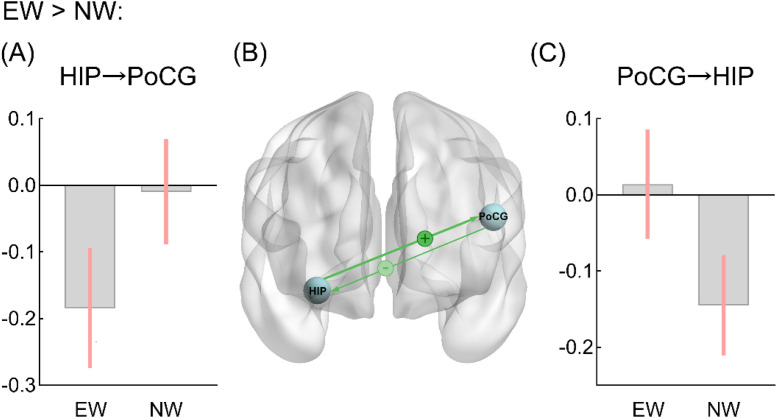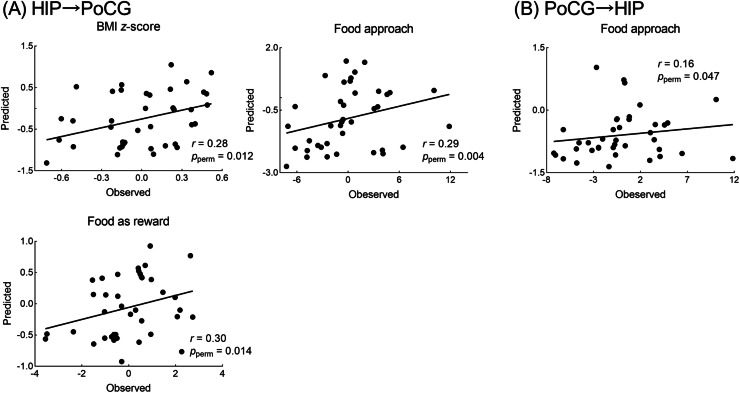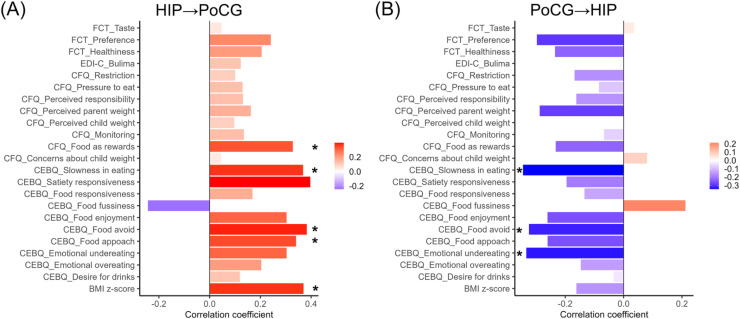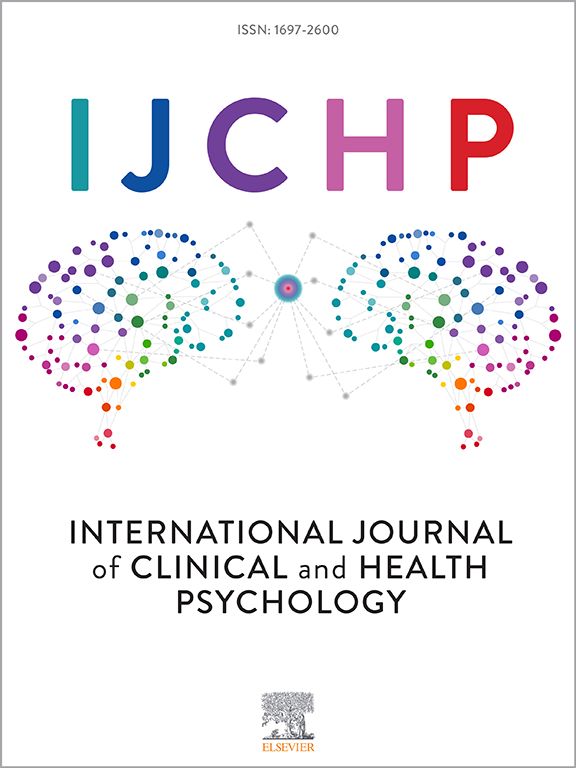Altered hippocampal effective connectivity predicts BMI and food approach behavior in children with obesity
IF 4.4
1区 心理学
Q1 PSYCHOLOGY, CLINICAL
International Journal of Clinical and Health Psychology
Pub Date : 2025-01-01
DOI:10.1016/j.ijchp.2024.100541
引用次数: 0
Abstract
Objective
The vicious circle model of obesity proposes that the hippocampus plays a crucial role in food reward processing and obesity. However, few studies focused on whether and how pediatric obesity influences the potential direction of information exchange between the hippocampus and key regions, as well as whether these alterations in neural interaction could predict future BMI and eating behaviors.
Methods
In this longitudinal study, a total of 39 children with excess weight (overweight/obesity) and 51 children with normal weight, aged 8 to 12, underwent resting-state fMRI. One year later, we conducted follow-up assessments of eating behaviors and BMI. Resting-state functional connectivity and spectral dynamic casual modeling (spDCM) technique were used to examine altered functional and effective connectivity (EC) of the hippocampus in children with overweight/obesity. Linear support vector regression, a machine learning method, was employed to further investigate whether these sensitive hippocampal connections at baseline could predict future BMI and eating behaviors.
Results
Compared to controls, children with excess weight displayed abnormal bidirectional inhibitory effects between the right hippocampus and left postcentral gyrus (PoCG), that is, stronger inhibitory hippocampus→PoCG EC but weaker inhibitory PoCG→hippocampus EC, which further predicted BMI and food approach behavior one year later.
Conclusion
These findings point to a particularly important role of abnormal information exchange between the hippocampus and somatosensory cortex in pediatric obesity and future food approach behavior, which provide novel insights into the neural hierarchical mechanisms underlying childhood obesity and further expand the spDCM model of adult obesity by identifying the directionality of abnormal influences between crucial circuits associated with appetitive regulation.



海马有效连通性的改变预测肥胖儿童的BMI和食物接近行为。
目的:肥胖恶性循环模型提出海马在食物奖励加工和肥胖过程中起重要作用。然而,很少有研究关注儿童肥胖是否以及如何影响海马与关键区域之间信息交换的潜在方向,以及这些神经相互作用的改变是否可以预测未来的BMI和饮食行为。方法:在这项纵向研究中,共有39名超重(超重/肥胖)儿童和51名体重正常的儿童,年龄在8至12岁之间,接受静息状态功能磁共振成像。一年后,我们对饮食行为和身体质量指数进行了跟踪评估。采用静息状态功能连通性和谱动态随机建模(spDCM)技术检测超重/肥胖儿童海马功能和有效连通性(EC)的改变。采用线性支持向量回归(一种机器学习方法)进一步研究基线时这些敏感的海马连接是否可以预测未来的BMI和饮食行为。结果:与对照组相比,超重儿童右侧海马和左侧中央后回(PoCG)之间表现出异常的双向抑制作用,即抑制性海马→PoCG EC更强,抑制性PoCG→海马EC更弱,这进一步预测了1年后BMI和食物接近行为。结论:这些发现表明,海马和体感皮层之间的异常信息交换在儿童肥胖和未来的食物接近行为中起着特别重要的作用,为儿童肥胖的神经层次机制提供了新的见解,并通过确定与食欲调节相关的关键回路之间异常影响的方向性,进一步扩展了成人肥胖的spDCM模型。
本文章由计算机程序翻译,如有差异,请以英文原文为准。
求助全文
约1分钟内获得全文
求助全文
来源期刊

International Journal of Clinical and Health Psychology
PSYCHOLOGY, CLINICAL-
CiteScore
10.70
自引率
5.70%
发文量
38
审稿时长
33 days
期刊介绍:
The International Journal of Clinical and Health Psychology is dedicated to publishing manuscripts with a strong emphasis on both basic and applied research, encompassing experimental, clinical, and theoretical contributions that advance the fields of Clinical and Health Psychology. With a focus on four core domains—clinical psychology and psychotherapy, psychopathology, health psychology, and clinical neurosciences—the IJCHP seeks to provide a comprehensive platform for scholarly discourse and innovation. The journal accepts Original Articles (empirical studies) and Review Articles. Manuscripts submitted to IJCHP should be original and not previously published or under consideration elsewhere. All signing authors must unanimously agree on the submitted version of the manuscript. By submitting their work, authors agree to transfer their copyrights to the Journal for the duration of the editorial process.
 求助内容:
求助内容: 应助结果提醒方式:
应助结果提醒方式:


